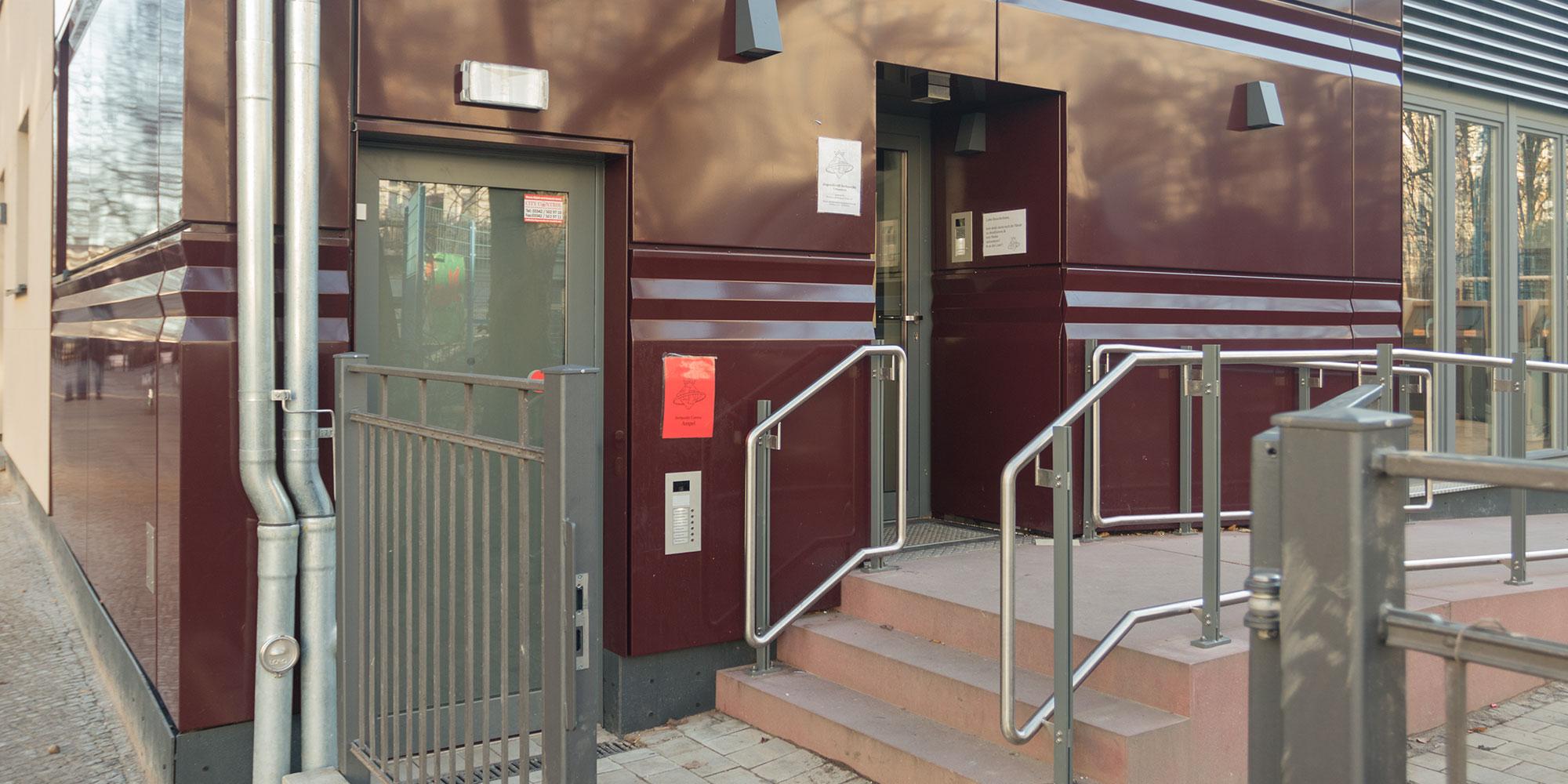Redevelopment of a youth leisure facility






The building of the Drehpunkt (literally “Pivot Point”) youth centre was built between 1958 and 1960 and has been used as a youth centre and hostel from the very beginning. Now the building is to be completely renovated.
The building fabric, i.e. the load-bearing masonry walls and the very slim reinforced concrete coffered ceilings including the plaster sub-ceilings, is protected as existing. No retrofitting measures are planned for the building shell itself.
Usage: After the conversion, the building will now house three facilities, each of which will be run by a different organisation. The ground floor as well as the first and first floors are used by the youth leisure centre Drehpunkt. The 3rd floor is occupied by a girls' residential community. The two upper floors serve as a combined child and youth welfare facility for the protection of young people at risk. This allocation is based on the needs of the different user groups, safety considerations as well as sound insulation requirements. The separate entrance areas of the hub at the front of the building and of the other users on Urbanstraße meet the different needs of the various target groups.

Design concept Drehpunkt: A massive extension on the western front of the building will form the striking public face of the facility in the future. It accommodates the lift, the reinforced concrete staircase and a three-storey foyer. On the lower three floors, the extension widens to the entire depth of the building, in order to slim down to the size of the staircase and the lift from the 3rd floor onwards. A canopy marks the entrance.
The way into the building is through a glazed vestibule that leads to a spacious foyer with an air space up to the 2nd floor. From here, the three levels of the “Drehpunkt” are accessed via an open staircase, which allows visual contact between the floors and is the focal point of the facility. A climbing wall is provided on the closed side wall of the foyer. In the warm season, a door system provides direct access to the outside. The three-storey glazing is shaded with fixed sun protection slats. The entrance area is accessed via three steps and a ramp. The lift is designed as a through-loader on the ground floor, so that all storey levels (except the attic and basement) are connected to street level.

User requirements Assisted living: The girls' shared flat comprises 6 single rooms, 3 bathrooms (one of which is suitable for disabled persons) and a common room with an open kitchen is provided. The residents may use the small roof terrace above the foyer under supervision.
User requirements for the crisis centre: The crisis centre uses 5 single rooms, two bathrooms, a common room and a caregiver's room with bathroom on each floor. In addition, a WC suitable for disabled persons and a kitchen are planned.
Extension: The second staircase in the extension connects all areas of use with each other as an escape route. To ensure that it can still be used as an internal connection for the “Drehpunkt” and the crisis point, two additional door closures are planned below and above the 3rd floor.
The top flight of stairs is already outside the insulated envelope. An exit door is located on the top landing. In this way, the staircase to the roof is not visible from below. For urban planning reasons, the extension should not project above the eaves height of the existing building.
Roof terrace: Visitors to the “Drehpunkt” can access the roof terrace via the stairs of the extension. This space is extraordinarily precious for the work with the young people due to its location with the spectacular view and its atmosphere. Since the roof terrace was not calculated at the time with today's usual payload, all the existing decking, waterproofing and screeds are being replaced with a new, much lighter structure. The new structure consists of a layer of aerated concrete slabs for fire protection, a walkable slope insulation made of mineral wool and a grate as a usable covering.
Thermal insulation: The building envelope was already insulated in the 1980s with an ETICS with a thickness of 6 cm. This polystyrene insulation had to be removed and disposed of. A new mineral insulation with a thickness of 18 cm replaces it.
The façade cladding in the existing building was designed as a rear-ventilated plaster base plate. The extension is clad with metal panels.